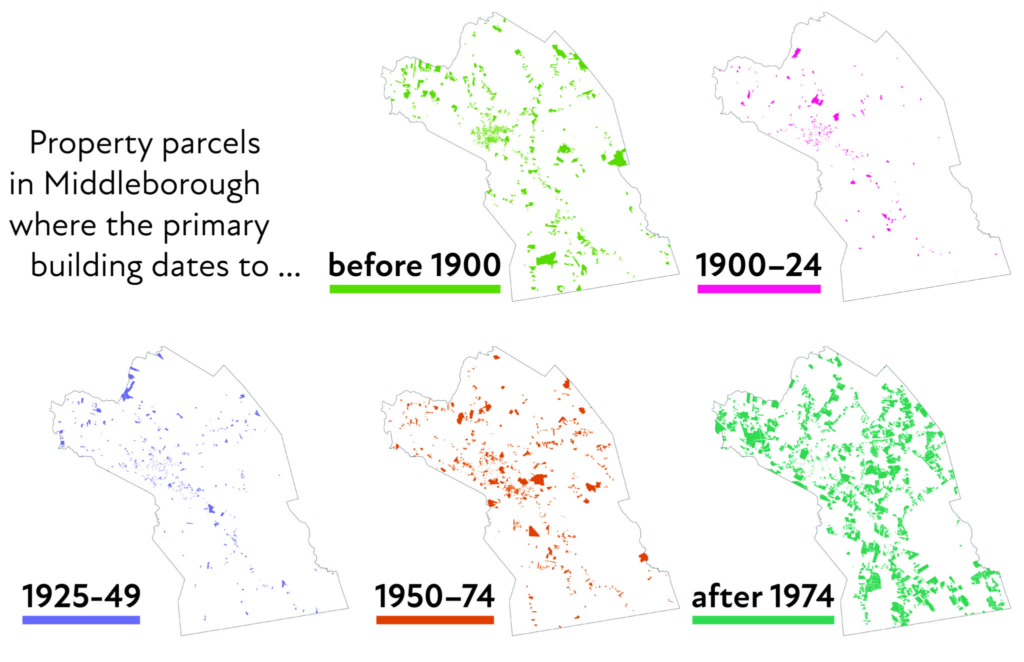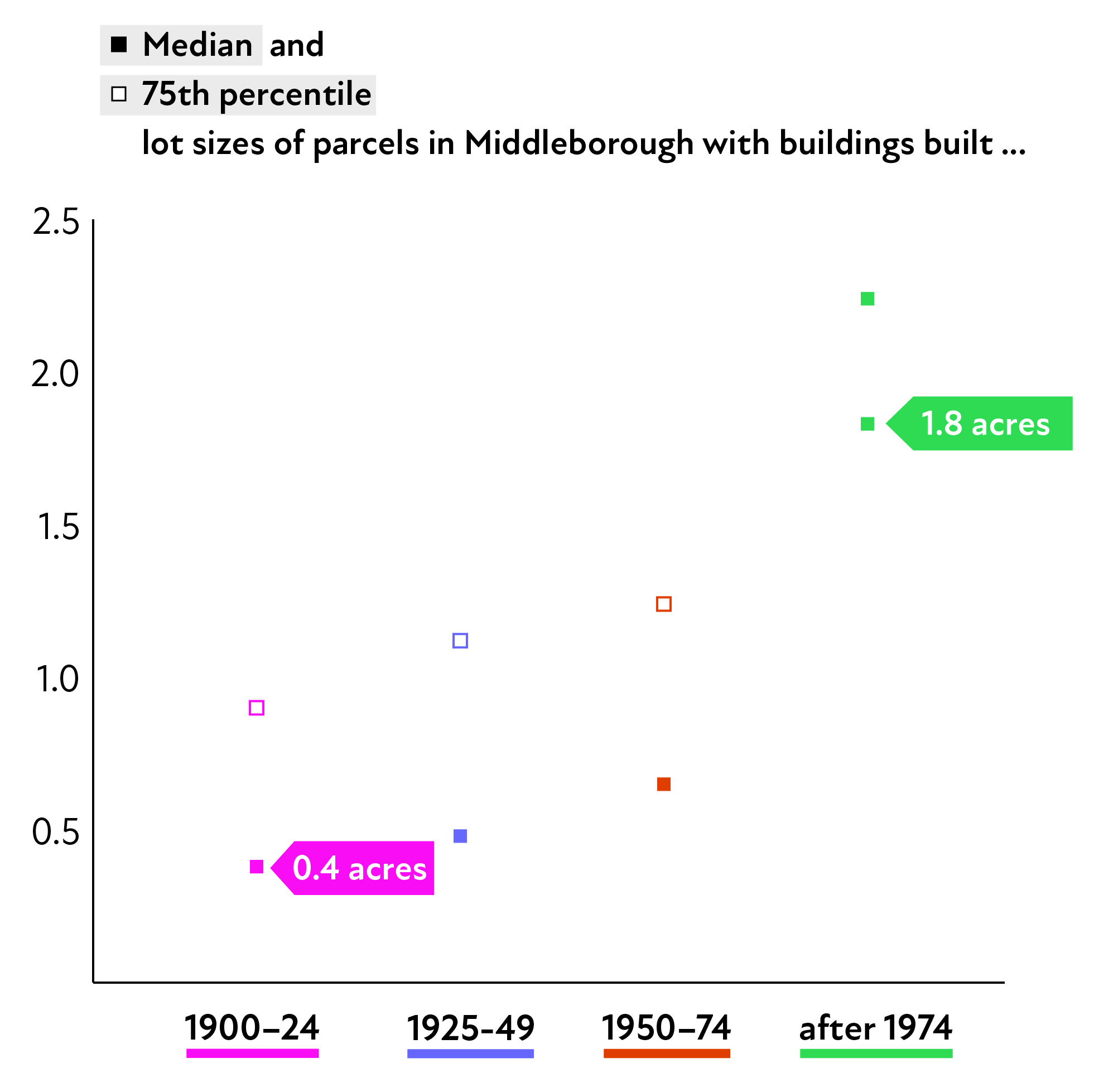As just one example, consider the Town of Middleborough, which announced in February that it would ignore the state’s new mandate that municipalities provide zoning for multifamily homes near MBTA stations. The housing law, complained Middleborough in an official statement, “does not take into account the unique characteristics of each community.”
The following sets of maps show parcels of property in Middleborough colored by the estimated date of construction, taken from tax records, of the primary building on each parcel. As is obvious from the first map, what remains of Middleborough’s pre-1900 development pattern is a tightly nucleated town center, fringed by larger agricultural properties along the major roads running to neighboring communities.
In the early part of the 20th century, Middleborough retained the overall shape of this historic core. But by the 1950s and beyond, the town succumbed wholesale to suburban sprawl. The map of parcels with buildings erected from 1950–1974, and especially the map of post-1974 tracts, shows how Middleborough, like so many other suburban towns, gobbled itself up with land-hungry development patterns—an example of local control over land use which paid little respect to anything resembling a “historical” built landscape.

Statistics bear out this unfortunate story of local land-use controls failing to protect legacy landscapes. Of Middleborough’s parcels with buildings dating between 1900 and 1925, the vast majority are smaller than one acre, and the median parcel size is just under 0.4 acres. Over the 20th century, lot sizes grew and grew, to an average size of nearly 0.5 acres between 1925 and 1949, 0.7 acres between 1950 and 1974, and a staggering 1.8 acres for parcels with buildings built 1975 or later.

These are the very same decades during which towns in Massachusetts began to develop their own planning powers, and Middleborough’s story is hardly unique—nearly every municipality in Massachusetts went through the same transition in the postwar period.
If municipal planners in the 20th century had evinced even the slightest concern for historic preservation, the present-day landscape of Massachusetts would now look utterly different than it actually does. The overwhelming majority of today’s Massachusetts suburbanites live in homes and neighborhoods that would have been utterly out of character even as late as the 1930s. In fact, at the scale of the residential clusters where most people lived, nearly every place in Massachusetts—even rural and suburban communities—was far more dense 150 years ago today than today.